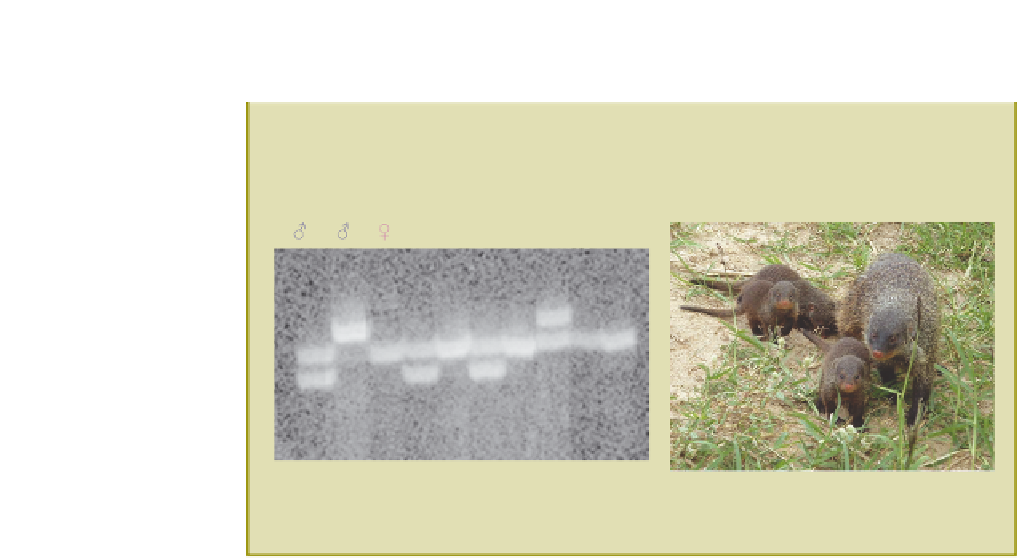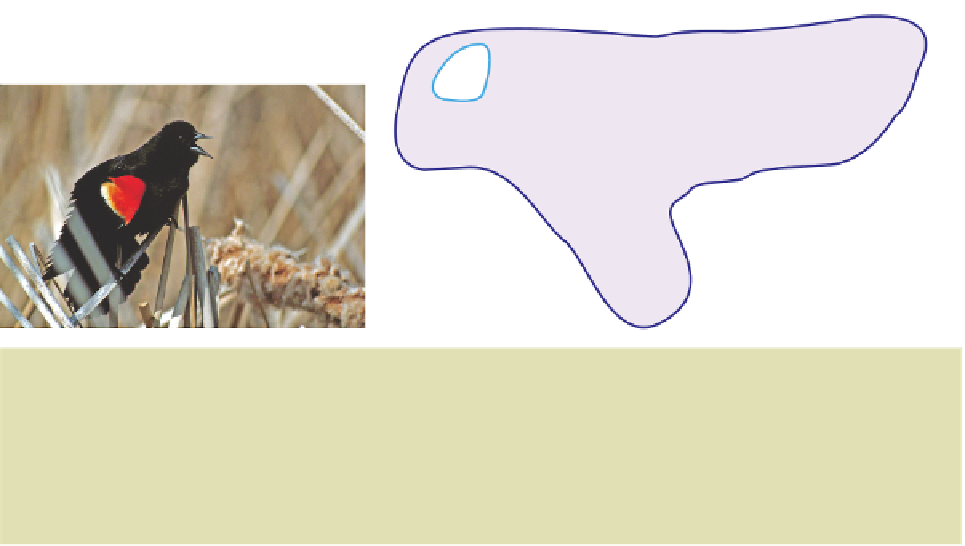Biology Reference
In-Depth Information
group fathered on average 85% of the group's pups. The older males achieved
this high reproductive success by choosing to focus their mate-guarding effort
on the oldest, most successful females.
A
B
12 3
4 5 6 7
Fig. B9.1.1
Using DNA microsatellites to assign paternity in banded mongooses.
Photos © Hazel Nichols.
(b)
A
D
2
B
5/5
(a)
3
0/4
6/8
5/9
3
1
1
C
1
1
3/3
2
5/6
1/8
2/4
2/5
7/7
2
3/3
4
3
2
2/4
2/3 = Realized/apparent success
1
11/14
2/3
= EPFs obtained
2
100 m
Fig. 9.8
(a) A male red-winged blackbird displaying his red epaulets. Photo © Bruce Lyon. (b) Reproductive
success of male red-winged blackbirds on a marsh in Ontario, Canada, assessed by DNA markers. The fractions
in each male territory show the number of chicks sired by the resident male over the total chicks raised. Arrows
refer to extra-pair fertilizations (EPF's): the origin of the arrow shows the identity of the cuckolding male; the
arrowhead indicates the territory in which he fertilized chicks; the number in the circle indicates the number of
extra-pair chicks he sired. The map shows that most, but not all, cuckolders were near neighbours. From Gibbs
et al
. (1990). Reprinted with permission from AAAS.
Polygyny
If monogamy in birds often occurs because males are unable to gain another female,
rather than because it pays males to remain faithful to one mate, what permits
regular polygyny in some species? Polygyny (one male with several females) in birds
usually arises through males monopolizing females indirectly, by controlling scarce


















































































